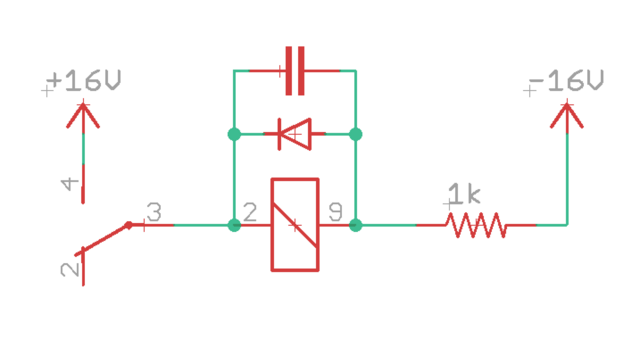elskardio
Well-known member
Hi Guys,
Is there any drawback to connect a relay's coil between V+ and V-, instead of V+ and Ground?
Example for a 24V relay using a split 16v power supply.

Thanks
Is there any drawback to connect a relay's coil between V+ and V-, instead of V+ and Ground?
Example for a 24V relay using a split 16v power supply.

Thanks



